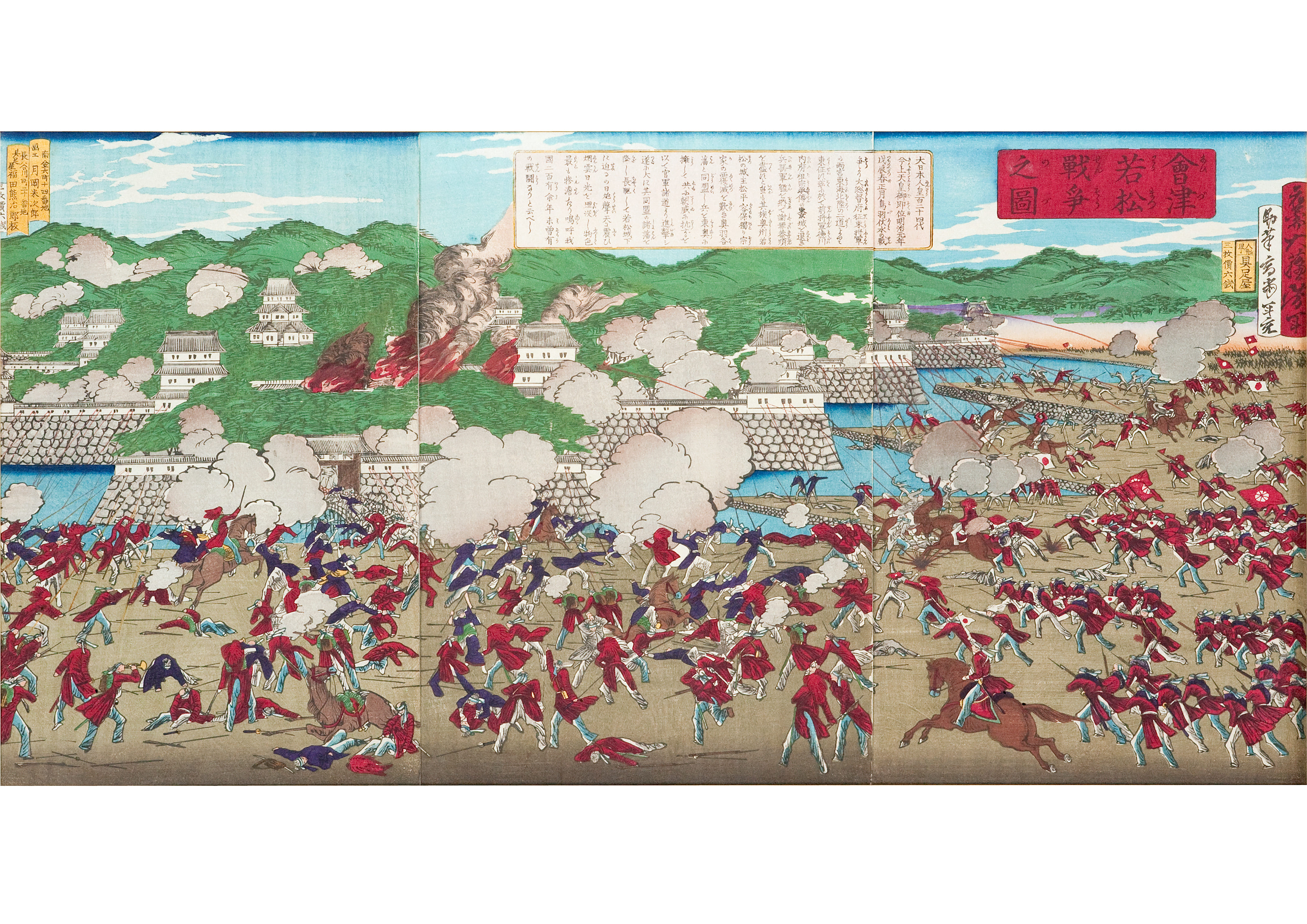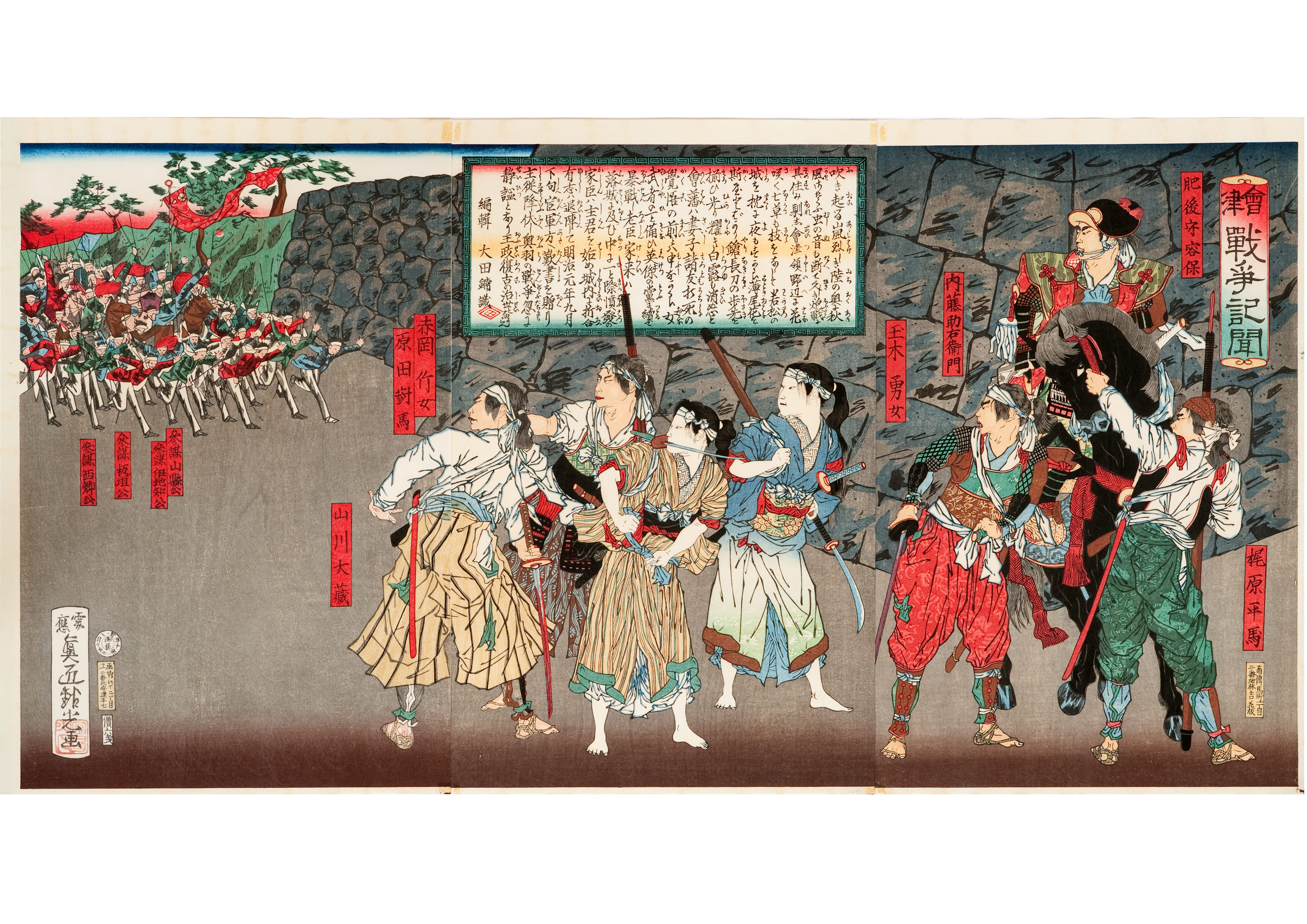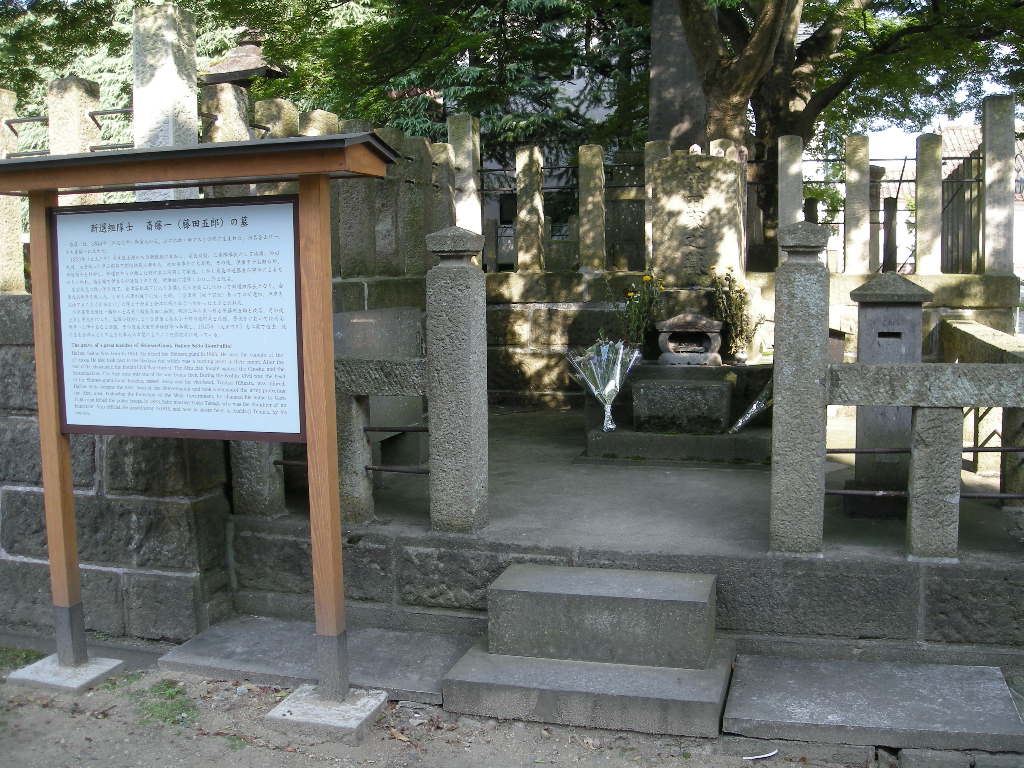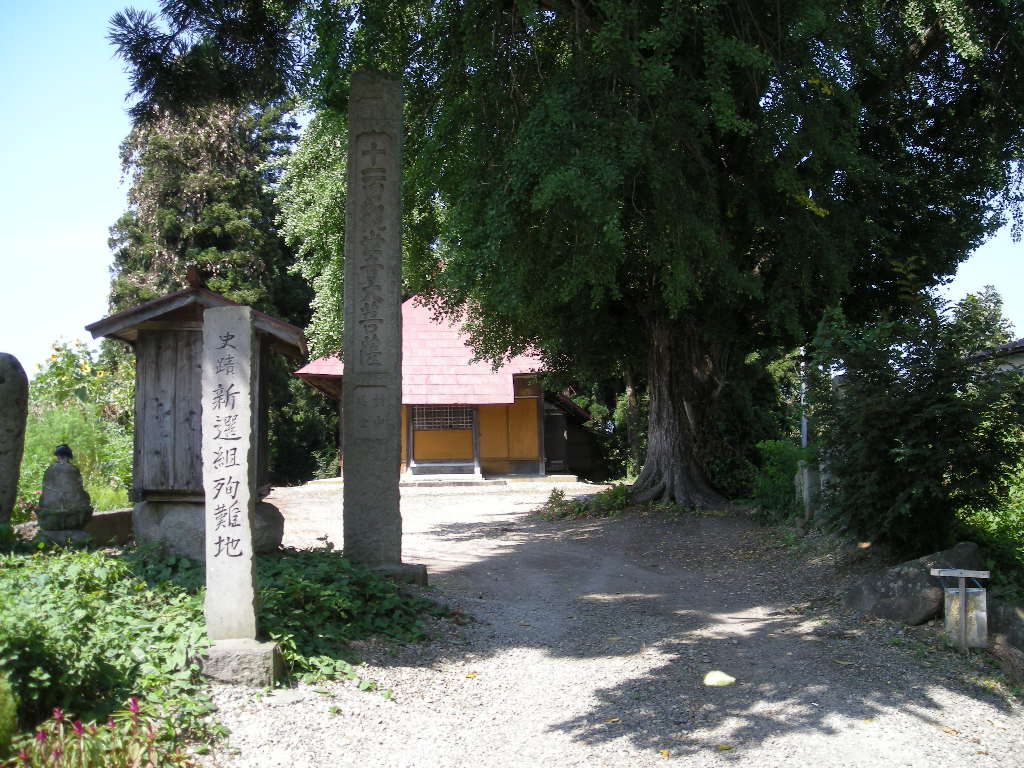2023.04.20 The Boshin War and the Battle of Aizu

In the autumn of 1868, Aizu was caught up in the Boshin War (1868–1869), fought between forces loyal to the shogunate and those who supported a return to imperial rule. The fighting culminated in a month-long siege of Tsuruga Castle in Aizu-Wakamatsu.
Supporters of the shogun
The final years of the Edo period (1603–1867) were a time of unrest and social change. Under the warrior class rule of the Tokugawa shogunate, the emperor’s status had been reduced to that of figurehead. International relations with Western countries had been reestablished in 1853 after more than 260 years of near isolation, but some samurai were unhappy with the governance of shogun Tokugawa Yoshinobu (1837–1913). They were concerned that Japan’s political position would be weakened by opening up to Western nations.
The Aizu domain samurai, well-known for their discipline, skills, and bravery, had close ties with the shogunate. Under the leadership of daimyo lord Matsudaira Katamori (1836–1893), Aizu sent many troops to Kyoto (the capital at the time) to help keep peace in the city. Katamori, as Yoshinobu’s cousin and trusted supporter, served as the military governor of Kyoto from 1862 to 1868. This favored status led members of several other domains to grow envious and mistrustful of him and the rest of the Aizu domain.
Power struggles
When Emperor Meiji (1852–1912) came to the throne, leaders of the powerful Satsuma, Tosa, and Choshu domains (present-day Kagoshima, Kochi, and Yamaguchi Prefectures) persuaded the young emperor to side with them against the shogunate. Yoshinobu initially agreed to give up his post as shogun in a bid to avoid complications and secure his own safety. However, Yoshinobu was unhappy with the extent to which the supporters of the imperial restoration sought to remove his family’s political influence. He subsequently tried to take back control of Kyoto from the emperor, setting the stage for civil war.
On January 27, 1868, forces of the Aizu family fought the newly established Satsuma–Choshu alliance at the Battle of Toba-Fushimi in Kyoto. Soon after, the emperor bestowed official status on the alliance as the imperial army. Yoshinobu gave up his claims to power and escaped from Kyoto, leaving Katamori and his supporters to cope. The emperor took control of the country in 1867, ending rule by the warrior class and ushering in the Meiji Restoration (1868). The alliance then demanded that Katamori and the Aizu samurai be punished. Katamori’s repeated efforts to apologize were not accepted, and he retreated with his forces back to Aizu.
The final battle
When all samurai were ordered to return their lands to the emperor, the Aizu domain samurai refused. They continued to fight for some months, aided by an alliance with other clans in the Tohoku region of northern Honshu. Among those supporting Aizu were members of the Shinsengumi (New Select Brigade), a security squad that Katamori had established to protect the shogunate’s representatives in Kyoto. While most of the Shinsengumi were not from samurai families, they were known for their sword skills and fierce loyalty to the shogunate.
By autumn 1868, the Aizu forces were fighting alone to defend their domain as the imperial army closed in. The enemy had newer and more powerful weapons, including guns and cannons imported from abroad. October 6 marked a turning point, when the imperial army surrounded Tsuruga Castle, trapping the 5,000 citizens sheltering inside, including many women, children, and elderly. Katamori saw that conditions were rapidly worsening for his people and agreed to surrender a month later.
Officials from the neighboring Yonezawa domain (now part of Yamagata Prefecture) assisted in negotiating the terms of the surrender. Katamori, his son Nobunori, and senior leaders were placed under house arrest, and the era of the proud Aizu domain drew to a close. Japan was now united under one leader and the emperor established Tokyo as the new capital. The former domains were abolished in favor of a prefecture system, with Aizu becoming part of present-day Fukushima Prefecture.

This English-language text was created by the Japan Tourism Agency.


